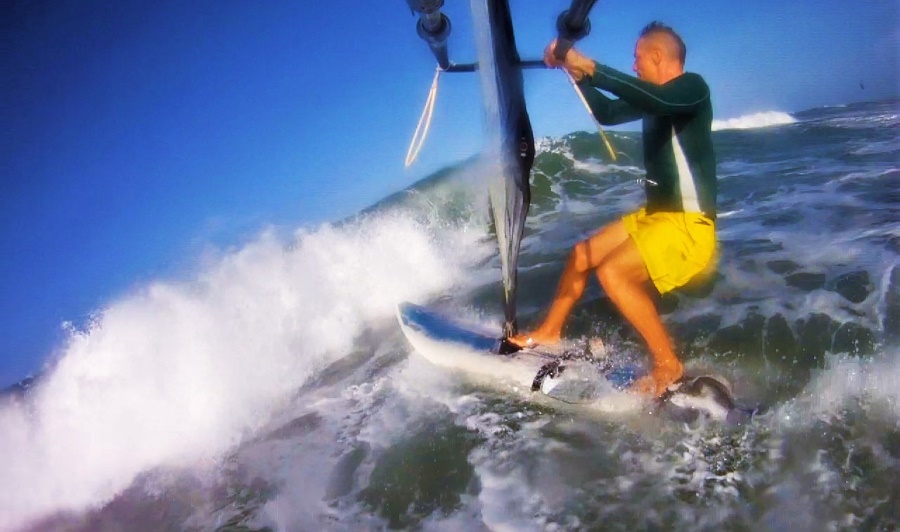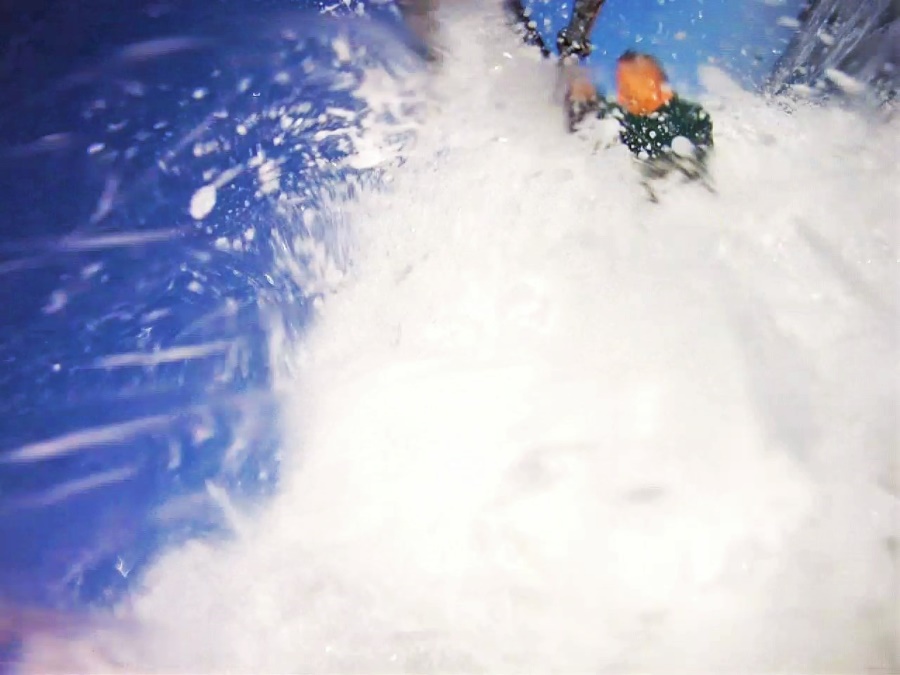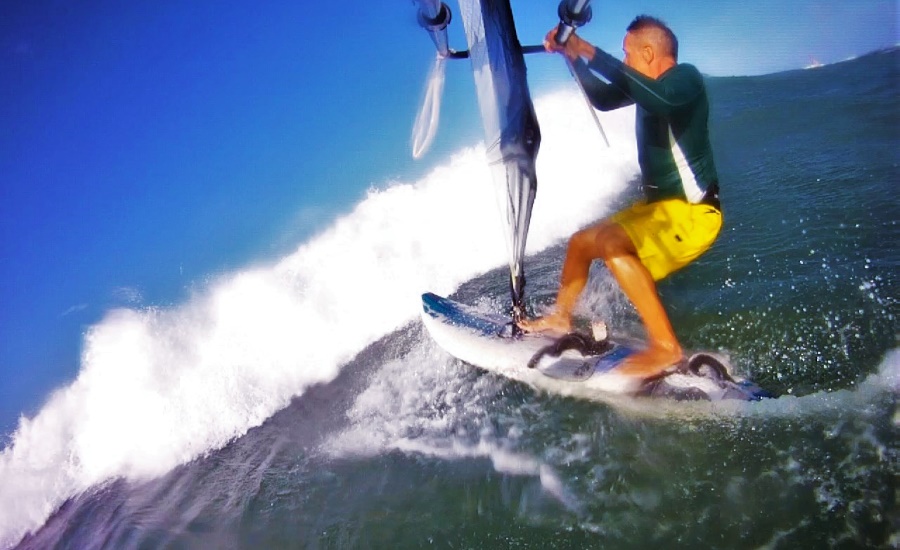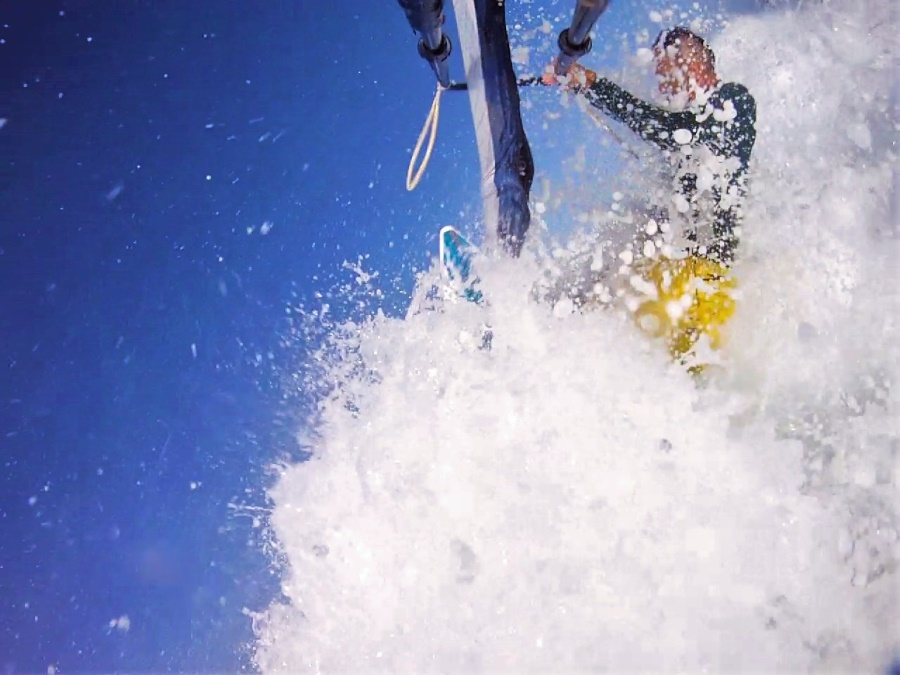| View previous topic :: View next topic |
| Author |
Message |
manuel

Joined: 08 Oct 2007
Posts: 1158
|
 Posted: Mon Sep 26, 2016 9:49 am Post subject: Quick question for heavy weights slogging thru the break Posted: Mon Sep 26, 2016 9:49 am Post subject: Quick question for heavy weights slogging thru the break |
 |
|
By heavy weights I mean 90kgs+ / 200lbs+ or simply if you use a sinker which may have you slog through the break underwater.
When slogging out without enough wind to get the board out of the water, how do you proceed technically through the white water and peaks?
How do you manage body position, timing, going backwards, when white water is hitting the foot of the sail, etc?
_________________
*NEW* - Manu's Windsurfing Blog, The STORE! |
|
| Back to top |
|
 |
jingebritsen
Joined: 21 Aug 2002
Posts: 3371
|
 Posted: Mon Sep 26, 2016 10:11 am Post subject: Posted: Mon Sep 26, 2016 10:11 am Post subject: |
 |
|
i am 215 lbs. sail in florida. use 105, 114, 129 liter wave to free rides most of the time. most of all i use 11'5" x-long board.
slogging thru impact zone is a matter of anticipating the push back from the white water. sinking the board in stuff much over 2 feet is bad news. the wave will throw you back toward the beach. if the wind is cross off, the push back results in more apparent wind. cross on, less apparent wind, even to the point of getting pushed back hard, making important to anticipate getting back winded.
if the wave is going to hit your sail, sheet in hard right b4 impact and mast foot pressure extra. foot work changes with conditions.
_________________
www.aerotechsails.com
www.exocet-original.com
www.iwindsurf.com
http://www.epicgearusa.com/ |
|
| Back to top |
|
 |
isobars
Joined: 12 Dec 1999
Posts: 20935
|
 Posted: Mon Sep 26, 2016 11:26 am Post subject: Posted: Mon Sep 26, 2016 11:26 am Post subject: |
 |
|
I was once ignorant enough to try force-fitting Gorge/sinker boards (me: 190-200# plus neoprene dry suit sometimes over a steamer, board volume: 65L) into side-on (just short of side-wind) ocean surf. Getting out was a matter of keeping the board pointed generally west (Oregon coast) while applying power when suitable, thus sooner or later clearing the impact zone. I used my legs very dynamically in anticipation of each breaking wave, letting the nose pop up over each approaching wave, then lifting the tail* and driving the nose down just as the board cleared the peak. With luck and evolving skill, I could often briefly plane between waves on the way out to shorten the process.
* Easy with my back foot in its strap, even with no weight on that foot. That back foot let me raise or lower the tail at will, protected me from getting launched in the very frequent impact zone gusts, helped me quickly transition into and out of planing whenever that prospect presented itself, and gave me heel'n'toe steering which let me pick the easiest path through the incoming terrain. Using my feet to instantly adjust fore'n'aft weight bias let me keep my center of gravity between my feet, without having to commit my cg way forward to achieve MFP through the boom.
This combination made getting out through the small surf I faced ... breaking faces seldom much over head-high, non-breaking swell further out < 12 feet ... fairly consistent. I was able to maintain enough forward speed that my board was seldom flooded; none of this knee-deep slogging crap. Knee-deep = under-rigged, by my criteria; I was usually able to steer around the curl or punch through soft curls, so my sail foot immersion was usually just low-density froth or foam.
FORTUNATELY, I finally realized how much easier it was with larger boards simply because the impact zone wind was extremely holey compared to the outside and the beach. Then the primary obstacle was the nuclear solar furnace boring into my brain me as I sailed directly into the low mid-PM sun. That unresolved problem ultimately drove me away from OR coastal sailing. |
|
| Back to top |
|
 |
dllee
Joined: 03 Jul 2009
Posts: 5329
Location: East Bay
|
 Posted: Mon Sep 26, 2016 11:39 am Post subject: Posted: Mon Sep 26, 2016 11:39 am Post subject: |
 |
|
150 lbs., always using 75 liter size wave boards.
If you're just slogging out, but comfortably powered in 10 mph breeze, your feet in slogging position, shove the board up and into the whitewater, bend your knees to absorb the impact, climb over the whitewater while pumping your sail well after the wave has passed, because the whitewater causes you to sail backwards in reality, and you have lots of air to pump. Slogging, you can mostly go over head high whitewater with solid pumping and smart knees.
Planing is easy, but underpowered planing means you jump out of the straps as soon as the whitewater passes, to gather up more speed quickly before the next row of whitewater arrives.
Barely sloggable breezes cause more problems, of course. Depending on how little breeze you actually have, it's possible even a 3' high row of whitewater will cause you to step off your board, but that's no biggee, a 3' row of whitewater rolls thru in 3' of water, so step off and quickly pump and jump back on.
Main key is pumping your sail, shoving your board into and over the whitewater to climb atop and over, and keep pumping the sail well after the whitewater has passed you. |
|
| Back to top |
|
 |
capetonian
Joined: 11 Aug 2006
Posts: 1197
Location: Florida
|
 Posted: Tue Sep 27, 2016 7:52 am Post subject: Posted: Tue Sep 27, 2016 7:52 am Post subject: |
 |
|
I wish I could contribute some useful technique, but all I have is an observation:
Slogging a "sinker" at a break with a channel is easy, without a channel don't waste your time. Get a bigger board.
What's more fun, slogging for an hour trying to get out and eventually giving up, or cruising out on a bigger board than you really want to ride and catching 20 waves in an hour? I've done both, and in light winds I'd rather use a bigger wave board and try to improve my technique (wave selection / timing / body positioning / hand movements) for future session when the wind is stronger and I can use a smaller board. If you can bottom turn and hit the lip on an oversized wave board in light winds, your sailing will be better when the wind comes back. |
|
| Back to top |
|
 |
manuel

Joined: 08 Oct 2007
Posts: 1158
|
 Posted: Fri Sep 30, 2016 11:37 pm Post subject: Posted: Fri Sep 30, 2016 11:37 pm Post subject: |
 |
|
I appreciate the feedback, very interesting stuff.
The other day we had very light and gusty winds between 15-22 knots roughly. Inside the break, it felt like much less at times (side-on).
There was one heavy weight slogger 92kgs on 86L.
He did sail backwards at times and so did I.
Anyway, I'm sure I can improve my reading to avoid hot spots, I know it can also be a matter of luck but I want to understand and improve my white water climbing.
It seems like if a wave crumbles, it can be easily climbed over mostly since there's slope in front of the white water to help keep the board above it and we don't need to reach as high up.
When it's more powerful and hollow, the flats are... quite flat and this is where I have trouble so I can't imagine how guys on sinkers manage to get over/through such sections. Or maybe is it that they don't and simply try again later?
Here are a couple of scenarios where I fail first and succeed second:
1/2. I'm sitting right in front of where the wave peaked, I have very little momentum, I try to pressure the rear of the board to pop over the white water...

2/2 (same wave) ...my board gets buried without the usual "ride up." I get stopped and the bottom of my sail gets pushed hard by the top of the white water, it's a fail! I believe my pop was too defensive and I stay crouched too long, without sheeting in enough. Thoughts?

1/2. Similar situation but from experience above minutes before, I decide to pop even harder and give it all I had...

2/2 (same wave) It worked! My board went over the "hard" part of the white water and climbed up, no water hit the sail, I was able to fly the sail thereafter to keep going despite the low initial speed.

I am currently working on a video (almost done) explaining in details how to climb white water and I want to make sure I understand the move correctly.
The key elements seem to be:
1. Right before white water: lean back, rake the sail back, sheet in.
2. Right after ride-up: move body forward, tilt rig forward.
From my experience, it seems that the rear leg push needs to match the wave steepness. The mushier the wave is the more flat we can stay, the harder and more powerful the more back leg pressure needs to happen.
One problem I found with greater volume boards is that they can be very difficult to pop the nose as rear leg pressure doesn't tilt the board sufficiently. And for a given weight, there is an ideal volume for slog and ride.
Also, the tug from the wave on a 100L+ board seems to be significantly greater than what I get on a mid 80s board.
However in mushy waves, I've had lots of fun on a bigger board. It helps upwind ability, overall greater slogging speed, more waves per session, helps positioning on the wave, more projection, etc.
_________________
*NEW* - Manu's Windsurfing Blog, The STORE! |
|
| Back to top |
|
 |
jingebritsen
Joined: 21 Aug 2002
Posts: 3371
|
 Posted: Sat Oct 01, 2016 2:52 am Post subject: Posted: Sat Oct 01, 2016 2:52 am Post subject: |
 |
|
if one is used to side shore or side off, any onshore stuff will be very challenging. one of your pic's you round up. that makes your sail lose power, then backward and down in the drink we go.
light wind, 15-20, you say? i rig bigger. ESPECIALLY with onshore conditions. need extra juice to get out, but also need it for better upwind planing power, and being able to force front side rides or great back side hits or aerials.
with larger gear, one can work on onshore techniques far easier.
_________________
www.aerotechsails.com
www.exocet-original.com
www.iwindsurf.com
http://www.epicgearusa.com/ |
|
| Back to top |
|
 |
DanWeiss
Joined: 24 Jun 2008
Posts: 2296
Location: Connecticut, USA
|
 Posted: Sat Oct 01, 2016 9:55 am Post subject: Posted: Sat Oct 01, 2016 9:55 am Post subject: |
 |
|
I find that it's vitally important to push the nose off the wind quite forcefully just as you begin the climb. Driving the nose off the wind requires a solid pump rather than leaning forward which will often result in a fall to windward.
Diving the nose to leeward contacts the lack of fin pressure at low speed, made all the worse by the foam in which it now sails. As a result, you reduce the chance of rounding up and either making a save or falling, each of which is very slow.
Another thing that I think you already recognize: the least ideal place to climb the white water is where the wave just broke. This is true whether you have a ton of power and all the worse when slogging. Where and when you cross the broken wave means much more when underpowered than well powered up.
Another trick is to know the primary objective remains getting out past the break not the location where you get past. In other words, pump your butt off to get speed even though you will head sharply downwind. Any speed at all will help you over the white water far more than trying to stay upwind.
_________________
Support Your Sport. Join US Windsurfing!
www.USWindsurfing.org |
|
| Back to top |
|
 |
capetonian
Joined: 11 Aug 2006
Posts: 1197
Location: Florida
|
 Posted: Sat Oct 01, 2016 11:11 am Post subject: Posted: Sat Oct 01, 2016 11:11 am Post subject: |
 |
|
| Continuing on from DanWeiss's advice about the ideal place to climb whitewater, if I see a big set coming in when I am still on the inside, I'll sail backwind or otherwise delay and let the set break before I head out. Even delaying a few seconds and letting the whitewater settle slightly can be the difference between easily climbing it or getting denied. |
|
| Back to top |
|
 |
isobars
Joined: 12 Dec 1999
Posts: 20935
|
 Posted: Sat Oct 01, 2016 11:45 am Post subject: Posted: Sat Oct 01, 2016 11:45 am Post subject: |
 |
|
| manuel wrote: | | And for a given weight, there is an ideal volume for slog and ride. |
Not likely, as so much depends on volume distribution, planform, fin, sail power available, wave shape, skill, etc. |
|
| Back to top |
|
 |
|
|
You cannot post new topics in this forum
You cannot reply to topics in this forum
You cannot edit your posts in this forum
You cannot delete your posts in this forum
You cannot vote in polls in this forum
You can attach files in this forum
You can download files in this forum
|
|
|

